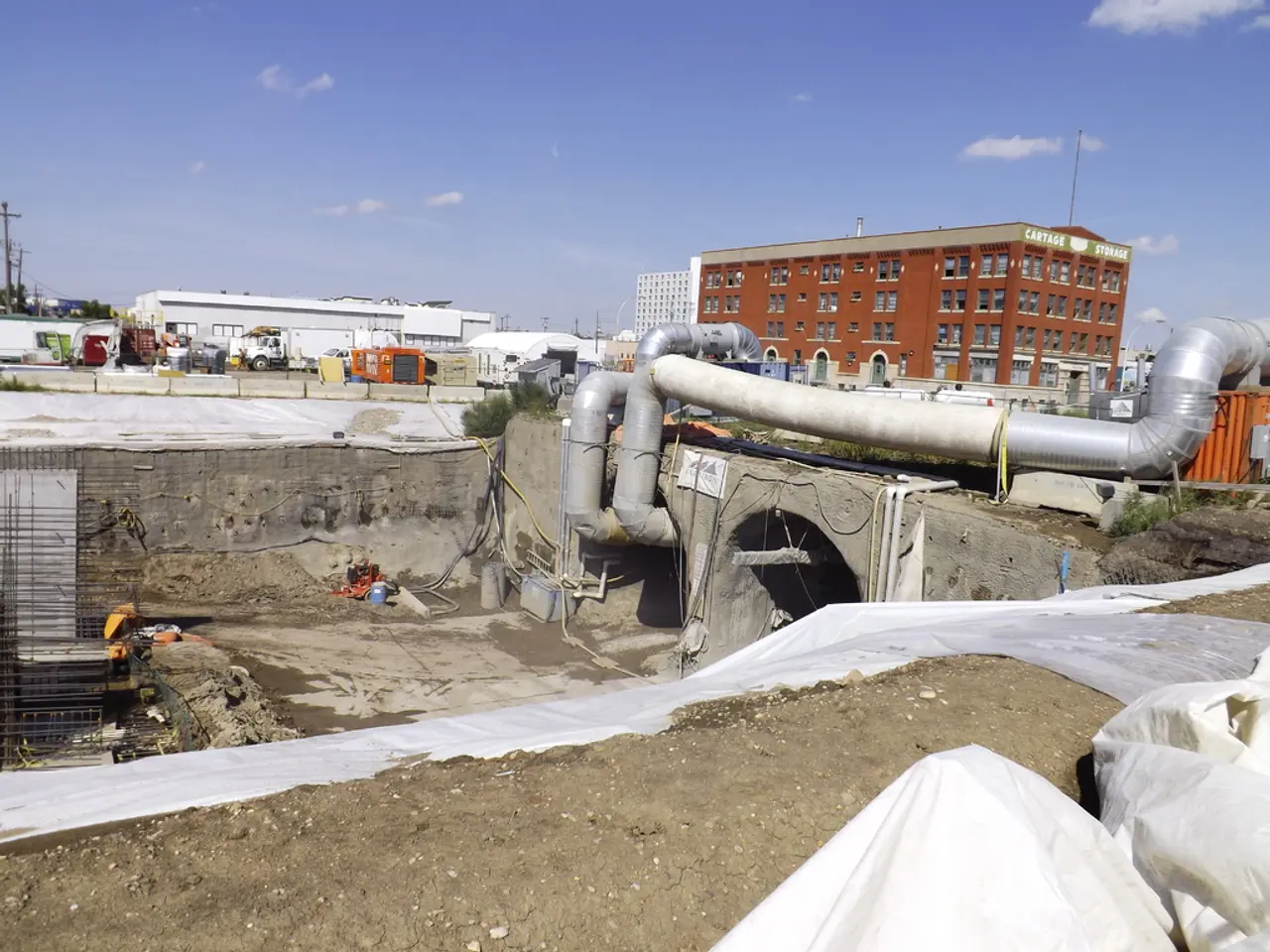Boosting the coal industry to satisfy the high energy demands of data centers, as endorsed by Trump.
In a bid to revive the struggling coal industry, President Donald Trump's administration has taken several steps to ease regulations and expand mining on public lands. These actions include significant federal giveaways to coal companies, lowering royalty rates for mining on public lands, and exempting certain coal power plants from stringent emissions rules [1][2][3][4].
One of the key aspects of these orders is their emphasis on the role of coal in meeting the demands of data centers and artificial intelligence (AI). However, there is no direct indication that Trump's executive orders specifically target coal usage for AI data centers. The broader energy impacts of these orders may influence the electricity grid that these centers depend on [1][2][3][4].
The JH Campbell power plant in West Olive, Michigan, is one of the plants being ordered to remain open by Trump's administration. The coal pile at the plant has been resupplied after being depleted, a move that could set a precedent for other coal plants [1].
Despite the decades-long decline of the coal industry, the sector is still seen as key to delivering on energy needs, particularly in regions experiencing an energy emergency partly caused by the retirement of coal and gas power plants [2]. However, the move to keep the JH Campbell plant open, and potentially others, comes at a time when many states are delaying coal plant retirements [1].
The trend in data centers is increasingly shifting towards cleaner energy sources for sustainability reasons, and no explicit policy links coal support with powering AI infrastructure in the documents [1][2][3][4]. Nevertheless, data center-driven energy demand is expected to double by 2030, with more than half of that demand coming from AI data centers [2].
Large companies' demand for clean energy such as solar is projected to grow to 275 gigawatts by 2035, enough to power more than 200 million average American homes [1]. Yet, several industry groups and major companies have declined to comment or did not respond to inquiries on the prospect of coal-fired electricity powering their data centers [1].
The decisions made in these negotiations could have far-reaching implications. Congressional budget negotiations gutted clean-energy tax credits, including a bonus for investments in energy communities and a green bank to invest in sustainable economic strategies for coal communities [1]. Jason Walsh of BlueGreen Alliance warns that the federal efforts to bolster the coal industry are overlooking coal communities seeking to move beyond the declining industry [1].
As the energy landscape continues to evolve, it is clear that coal communities are at a crossroads. While some see the Trump administration's actions as a lifeline for the industry, others fear that these efforts are cutting off resources necessary for transition [1]. The future of coal, particularly in relation to AI data centers, remains uncertain, but one thing is clear: the decisions made today will have significant implications for the environment, the economy, and the communities that rely on coal.
References:
[1] Lombardi, C. (2020, June 23). Trump's coal revival plan faces resistance from energy industry. Reuters. Retrieved from https://www.reuters.com/article/us-usa-coal-idUSKCN24328N
[2] Eilperin, J. (2020, June 22). Trump administration pushes to revive coal industry with new executive orders. The Washington Post. Retrieved from https://www.washingtonpost.com/climate-environment/2020/06/22/trump-administration-pushes-revive-coal-industry-new-executive-orders/
[3] Eilperin, J., & Mufson, L. (2020, June 22). Trump administration moves to expand coal mining on public lands, reversing Obama-era restrictions. The Washington Post. Retrieved from https://www.washingtonpost.com/climate-environment/2020/06/22/trump-administration-moves-expand-coal-mining-public-lands-reversing-obama-era-restrictions/
[4] Eilperin, J., & Mufson, L. (2020, June 22). Trump administration pushes to revive coal industry with new executive orders. The Washington Post. Retrieved from https://www.washingtonpost.com/climate-environment/2020/06/22/trump-administration-pushes-revive-coal-industry-new-executive-orders/
- The Trump administration's efforts to revive the coal industry are supported by several policy-and-legislation changes, including easing regulations, expanding mining on public lands, and providing federal giveaways to coal companies.
- Despite the emphasis on coal's role in meeting energy demands, particularly in data centers and artificial intelligence, no explicit policy links coal support with powering AI infrastructure in the documents.
- The trend in data centers is shifting towards cleaner energy sources for sustainability reasons, and large companies' demand for clean energy such as solar is projected to grow significantly by 2035.
- The JH Campbell power plant in West Olive, Michigan, is one of the plants being ordered to remain open, a move that could set a precedent for other coal plants and come at a time when many states are delaying coal plant retirements.
- The general-news about Trump's coal revival plan is facing resistance from the energy industry, as many see the decline of the coal industry as inevitable due to climate change and the shift towards renewable energy.
- The decisions made in these negotiations, including Congressional budget negotiations that gutted clean-energy tax credits, could have far-reaching implications for the environment, the economy, and the communities that rely on coal.
- While some see the Trump administration's actions as a lifeline for the coal industry, others fear that these efforts are cutting off resources necessary for the energy transition towards net-zero emissions and sustainable development goals (SDG).
- The environmental-science and science community have been closely following the climate-change impacts of the coal industry, and the future of coal, particularly in relation to AI data centers, remains uncertain.
- The financial industry, including investors and financial analysts, are closely monitoring the coal industry and its impact on business and policy, as the decisions made today will have significant long-term implications for the industry and the global environment.




